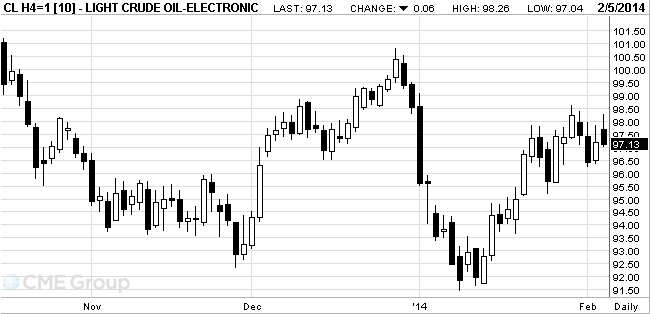- Oil fell
Market news
Oil fell
West Texas
Intermediate crude was little changed after erasing a gain of 1.1 percent.
WTI for March
delivery increased 18 cents to $97.37 a barrel at 10:50 a.m. on the New York
Mercantile Exchange. The volume of all futures traded was 7 percent lower than
the 100-day average.
Brent for March
settlement advanced 14 cents to $105.92 a barrel on the London-based ICE
Futures Europe exchange. Volume was near the 100-day average. The European
benchmark crude’s premium to WTI narrowed to as little as $7.91 a barrel,
slipping below $8 for the first time since Oct. 10.
Crude inventories
rose 440,000 barrels to 358.1 million last week, the Energy Information
Administration reported today. The report was projected to show a 2.55
million-barrel gain, according to the median estimate of 10 analysts surveyed
by Bloomberg.
Supplies of crude
at Cushing, Oklahoma, the delivery point for WTI traded in New York, declined
1.55 million barrels to 40.3 million, the report showed.
U.S. crude
production was unchanged at 8.04 million barrels a day, the EIA said. It rose
to 8.16 million in the week ended Jan. 10, the highest level since 1988, as
output surged on a combination of horizontal drilling and hydraulic fracturing,
or fracking, which has unlocked supplies trapped in shale formations.
Gasoline
stockpiles rose by 505,000 barrels to 235 million in the week ended Jan.
Refineries
operated at 86.1 percent of capacity, down 2.1 percentage points from the prior
week, the report showed.
